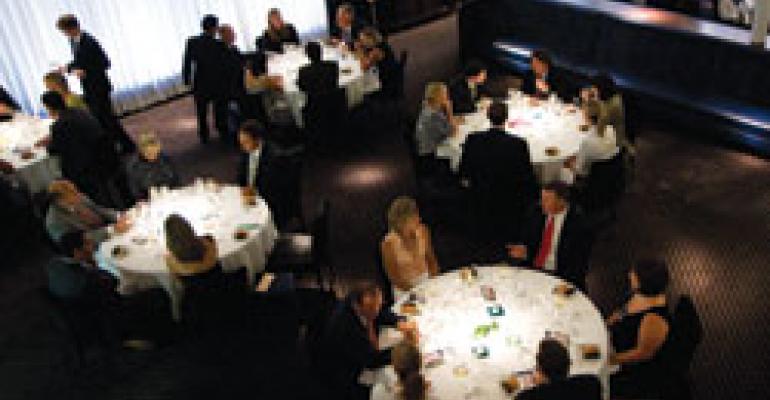CHICAGO As we roll through the dour days of winter, made even more challenging by tough economic times, the enterprising restaurateur considers how to put the proverbial butts in the seats through imaginative means. Wine dinners have a history of working, but are also a little stale, having been around for a long, long while. Beer dinners are hipper, but still a bit difficult to sell at the high end. So how about a bourbon dinner?
That's the conclusion the management reached at Tru restaurant in Chicago, where on Jan. 20, executive chef Tim Graham, chef-partner Rick Tramonto, pastry chef Meg Galus and wine director Chad Ellegood combined five courses of their critically acclaimed fare with some of the best bourbons Kentucky has to offer, including a rare, 23-year-old reserve whiskey.
For chef Graham, the experience of developing the menu was not only fun and fascinating, but also illuminating.
"Bourbon is pretty much my favorite spirit," he says, "but I've never before tasted it alongside a trained sommelier, and I was surprised by all the different flavors we found."
Within those diverse and disparate flavors, the one the pair discovered to be common to all the whiskeys was the char of the new American oak in which every bourbon is aged.
As a result, Graham explains, they used that one common taste to weave together all of the courses, from the bourbon-cured salmon with smoked emulsion appetizer through the cocoa-spiced venison with vanilla-scented farro verde main -- the "easiest course" to pair, Graham said -- to the date cake with smoked butterscotch dessert.
As important as this common thread, says John Hansell, publisher of Malt Advocate magazine and a veteran of many whiskey dinners, is the richness and weight of the menu the culinary team selected.
"There are a lot easier things to be pairing with food than whiskey, like wine or beer," Hansell says, "but, if you're going to do it, you need robust foods to stand up to all of the big flavors found in the spirits."
Hansell also advises caution where the alcohol content of the whiskey is concerned, although not necessarily for the most obvious reason.
The key is the solvent quality of alcohol, which, he says, can profoundly affect the way foods taste.
"Take something like a dish with a lot of peppery spice -- the alcohol will take hold of that and accentuate it, making the heat both hotter and more enduring," Hansell says.
Chef Graham also concerned himself with alcohol content, saying that the "biggest challenge" in developing the bourbon dinner was the strength of the spirits.
"You simply can't serve that much whiskey with each course of a multi-course meal," he says.
Perhaps that is the real reason Hansell reveals that he keeps a secret weapon at hand whenever he hosts such an event.
"When I host whiskey dinners, I always have a beer there, too," he says. "Sometimes, I pick a wine or a cocktail instead, but most of the time it's a beer."
Stephen Beaumont is a veteran beer writer and author of five books on the subject. His writing on beer, drinks, food and travel appears in a wide variety of national and international publications.

